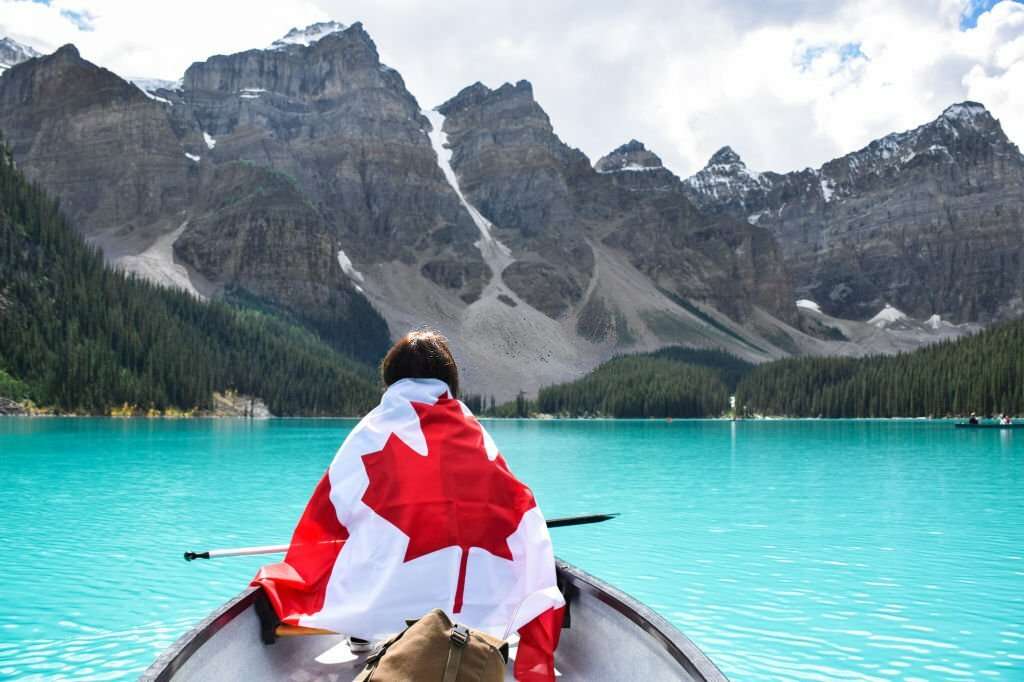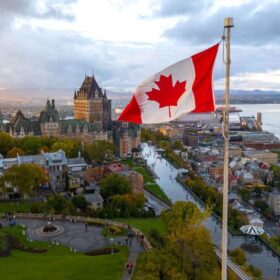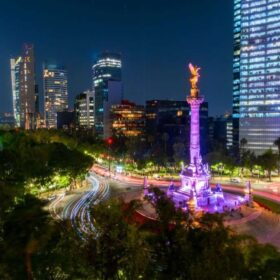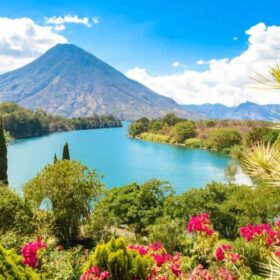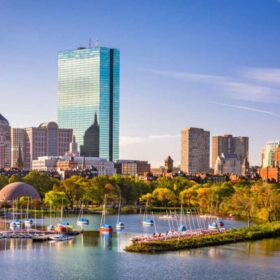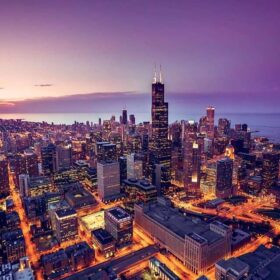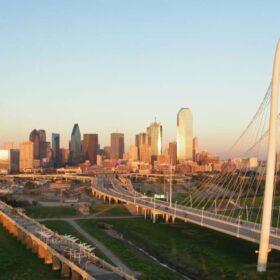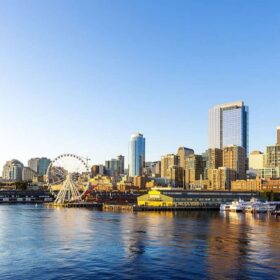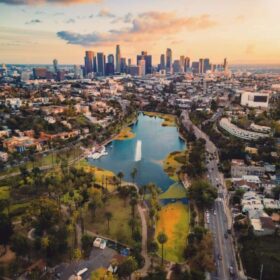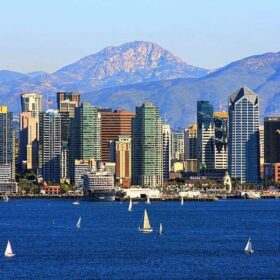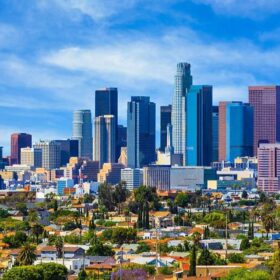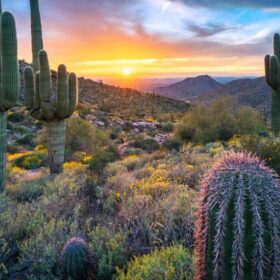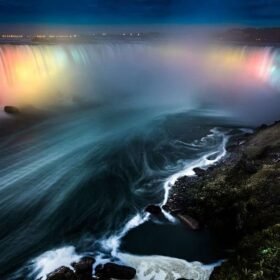In 1883, the discovery of a hot spring by railroad workers sparked a movement that culminated in the creation of Banff National Park, Canada’s first national park. The park is replete with awe-inspiring landscapes offered by the majestic Canadian Rockies, picturesque valleys, dense forests, and a wealth of wildlife, including mountain goats on the roads, moose, elk, and bears. Owing to this natural grandeur, the park swiftly established itself as one of top tourist attraction in Canada, year-round, from summer hiking to winter skiing.
Banff National Park enjoys popularity among a diverse range of visitors, from campers to those seeking the comfort of luxury accommodations after a day spent in the great outdoors. Here’s an overview of some of the top tourist attractions in Banff.
1. Moraine Lake
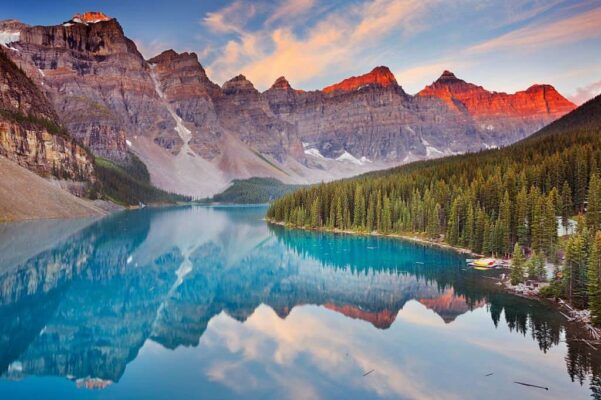
Moraine Lake, renowned for its breathtaking blue waters, is fed by glaciers. The vibrant hue is a result of the way light interacts with glacial silt suspended in the water. Situated a mere 12.5 kilometers (7.5 miles) from Lake Louise, Moraine Lake is encircled by the majestic Canadian Rocky Mountains. The vicinity offers several hiking trails, although it’s advisable to verify the trail conditions before embarking, as they can be restricted at times due to grizzly bear activity.
Among these trails, the Rockpile Trail stands out as one of the most popular. This brief path entails minimal elevation gain yet grants visitors the opportunity to behold one of the most stunning vistas in Banff National Park. From the summit of the Rockpile, you will be treated to a panoramic view of the Valley of the Ten Peaks, which consists of ten glacier-carved peaks that encircle Moraine Lake. This includes Mt. Temple, the third-highest peak in Banff National Park, soaring to an elevation of 3,549 meters (11,636 feet).
2. Peyto Lake
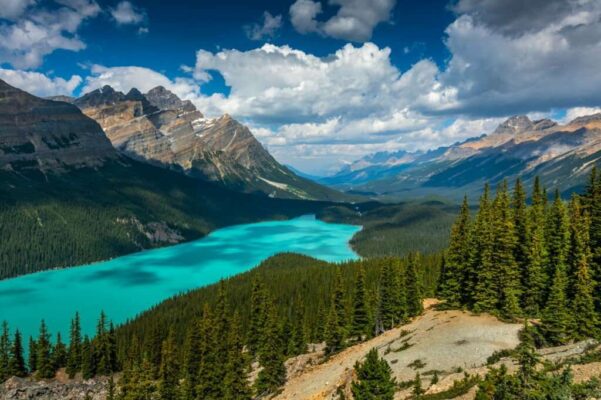
Bow Pass, standing at an elevation of 2,068 meters, ranks as the highest pass within Banff National Park and serves as the watershed between the river systems of the North and South Saskatchewan Rivers. A brief detour road leads to the impressive Peyto Lake viewpoint, while another splendid observation point is accessible on foot, approximately a kilometer from the parking area.
Peyto Lake exhibits the distinctive turquoise hue characteristic of many glacier-fed lakes in the region. It is particularly enchanting during the mid to late summer when the mountain meadows of Bow Summit are adorned with vibrant wildflowers.
For those seeking a more adventurous experience, a lengthy and steep trail descends from Bow Pass, spanning 2.5 kilometers, eventually reaching Peyto Lake. The lake is named in honor of Bill Peyto, a mountain guide who commenced his explorations of the area in 1894 and led pack horses laden with supplies northward over Bow Summit.
3. Lake Louise
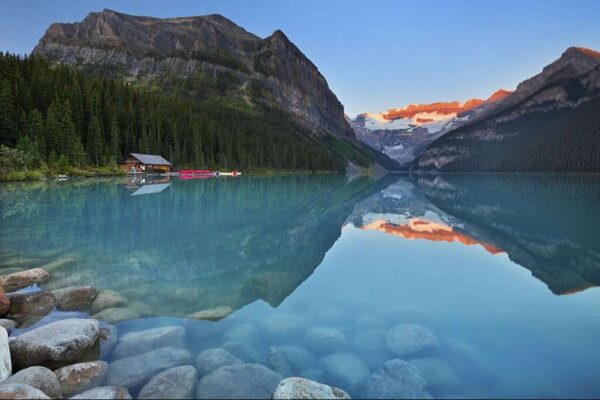
Lake Louise, with its mesmerizing emerald, green waters, is a breathtaking spectacle. Visitors can immerse themselves in its unspoiled beauty while hiking around the lake, which was named in honor of Princess Louise Caroline Alberta, the fourth daughter of British Queen Victoria. To truly grasp the splendor of this iconic lake, one should experience it in all seasons, from the lush greens of summer to the snow-capped mountains in winter.
Nestled on the eastern shore of Lake Louise, you’ll find the opulent Fairmont’s Chateau Lake Louise. This luxury resort hotel, constructed at the turn of the 20th century by the Canadian Pacific Railway, offers a regal setting against the backdrop of the lake. Lake Louise also transforms into a winter sports paradise, serving as the home to one of the largest ski resorts in North America. The Bow Valley Parkway, a scenic secondary highway extending for 48 kilometers (30 miles) alongside the Trans-Canada Highway, provides the most picturesque route to reach this captivating destination, conveniently connecting the town of Banff with the village of Lake Louise.
4. Banff Gondola
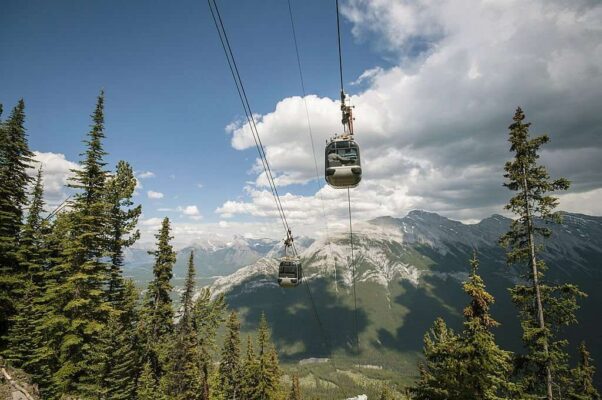
Travelers should ensure they have ample memory cards on hand before embarking on the Banff Gondola journey. The reason is that the vistas from the four-passenger gondola cars are breathtaking as you ascend and descend Sulphur Mountain, and the views of six mountain ranges from the observation deck are even more remarkably stunning. Once you reach the summit, visitors have the opportunity to access a historic site and a meteorological station via the skywalk. Additionally, there are interpretive hiking trails to explore. Please note that the gondola is closed during the winter months.
5. Johnston Canyon
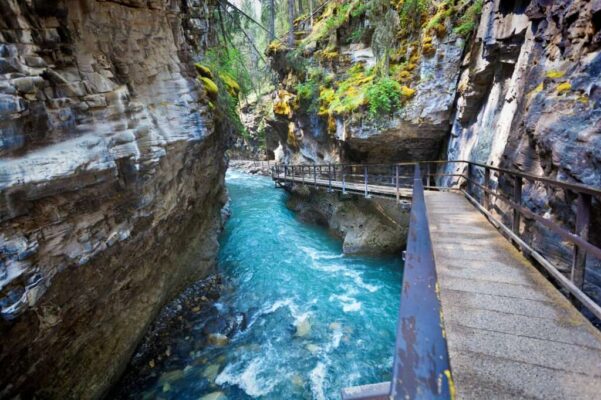
Johnston Canyon was carved through the erosion of limestone rock by Johnston Creek, which flows into the Bow River. The primary activity at Johnston Canyon is hiking to the Lower Falls, Upper Falls, and Ink Pots. To reach the Upper Falls, there’s a 2.7-kilometer (1.7-mile) hike that commences from behind the Johnston Canyon Resort. This trail is renowned as one of the busiest in the Canadian Rockies, with hundreds of tourists embarking on the 45-minute hike daily. While en route to the impressive 30-meter (98-foot) high falls, hikers may also spot ouzels, gray birds that exhibit a distinctive bouncing behavior on the rocks. After taking in the falls, visitors can follow the less crowded two-mile trail leading to the Ink Pots, which are mineral springs that bubble alongside Johnston Creek.
6. Sunshine Meadows
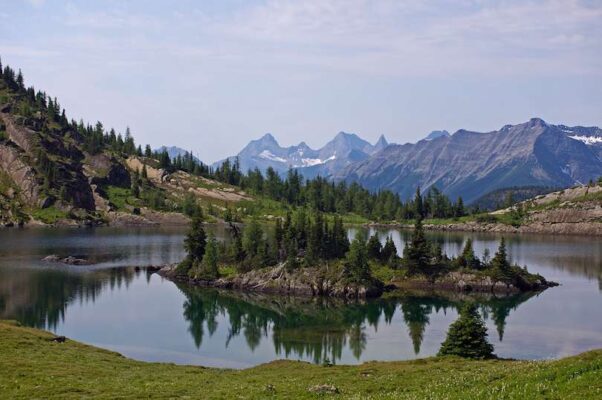
Reaching Sunshine Meadows, situated high in the Canadian Rockies atop the Continental Divide at the border of Alberta and British Columbia, may present a challenge, but the awe-inspiring scenery justifies the effort. These meadows are renowned for offering the finest alpine hiking and vistas in the Canadian Rockies. As spring transitions into summer, the meadows burst into full bloom, adorned with a profusion of vibrant wildflowers. To access Sunshine Meadows, visitors begin by taking a shuttle bus to the drop-off point. From there, they can choose between a leisurely one- to two-hour stroll through the meadows or opt for a more demanding full-day hike to destinations such as Quartz Ridge or Healy Pass. In either case, a breathtaking visual feast awaits.
7. Banff Upper Hot Springs
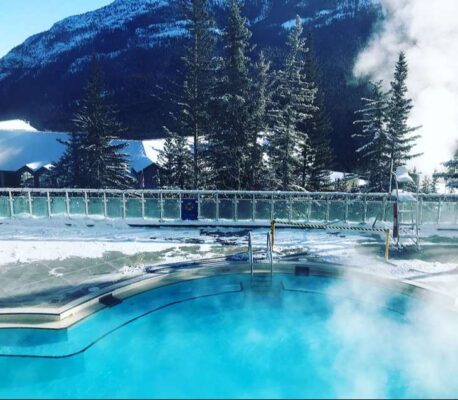
Banff Upper Hot Springs serves as an ideal spot for unwinding after a day spent hiking or skiing the trails. Visitors have been frequenting this Banff attraction since the 1880s to luxuriate in the rejuvenating mineral waters, even though First Nations had been doing so long before the railroad unlocked this portion of Canada. The indigenous peoples held the hot springs in high regard, considering them a sacred site. Notably, Banff Upper Hot Springs ranks as the highest hot spring in Canada, with water temperatures meticulously maintained within the range of 98 to 104 degrees Fahrenheit (37-40 degrees Celsius).
8. Bow Falls
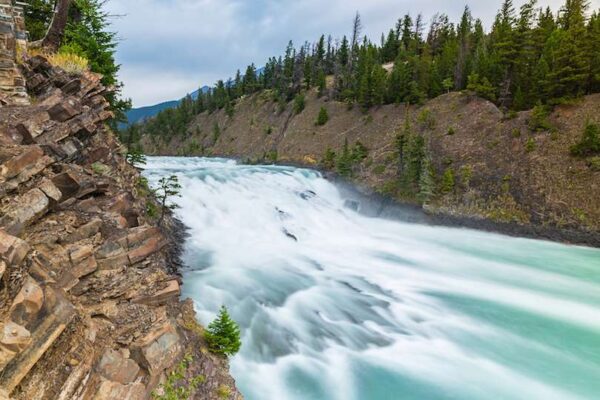
Movie enthusiasts might recall Bow Falls as the cascades over which Marilyn Monroe and Robert Mitchum made their daring escape from Indians in the 1953 film “River of No Return.” These falls, standing at a height of 9 meters (30 feet), constitute a prominent waterfall on the picturesque Bow River, where it converges with the Spray River just outside of Banff. Visitors can enhance their perspective of the thundering rapids by embarking on a ¾-mile trail alongside the river, leading to the falls. Separate trails are designated for pedestrians and cyclists, although bicycles are not permitted on the cliff-top segment, which involves ascending some stairs.
9. Lake Minnewanka
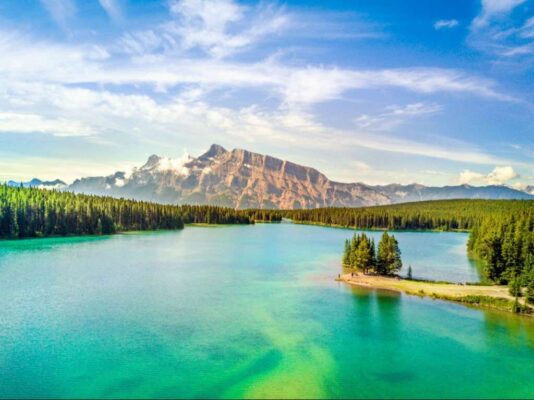
Lake Minnewanka, with its picturesque blue waters, offers a wealth of opportunities for outdoor enthusiasts. Activities range from hiking, mountain biking, and rock climbing to boating. During the winter months, visitors can engage in cross-country skiing and snowshoeing. The area is a haven for nature photographers, boasting stunning landscapes and a profusion of wildlife, including deer, bears, mountain sheep, and elk.
Situated just 13 kilometers (8 miles) from the town of Banff, it serves as a popular retreat from the hustle and bustle of downtown. For those seeking a leisurely stroll, the easygoing trail encircling the lake is an excellent choice. Additionally, Minnewanka Lake Cruises provides a 60-minute, informative cruise on the lake.
10. Whyte Museum
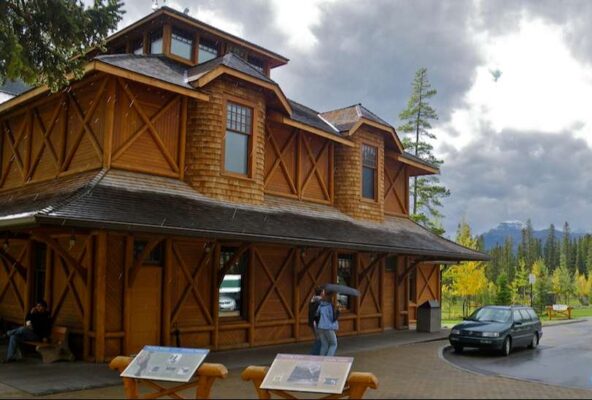
The Whyte Museum of the Canadian Rockies serves as an excellent starting point for travelers embarking on their journey through the awe-inspiring Canadian Rockies. This museum has its origins in a collection of paintings, documents, and other archival materials curated by Peter and Catharine Whyte, a project that began when the couple relocated to Banff in the 1930s. The museum is dedicated to the preservation of Banff’s history and the culture of the Canadian Rockies. In addition to its splendid gallery and an extensive collection of photographs capturing life in the Rockies, the museum complex encompasses four log cabins and two heritage homes, one of which belonged to the Whytes.
11. Cave and Basin National Historic Site
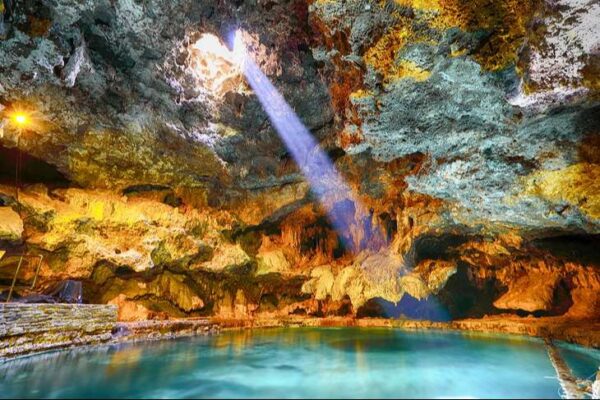
Cave and Basin National Historic Site stands as the birthplace of Banff National Park, where the foundation of the national park system was established to safeguard Canada’s unique locations.
Visitors can explore a self-guided trail that takes them past the original 1914 bathing structure and the site of the former hotel. Admission includes access to a 4D movie presentation featuring Banff and other national parks.
Cave and Basin National Historic Site also offers several delightful hiking options. The Marsh Trail, covering a distance of 2.8 kilometers, showcases exotic flowers, while the Sundance Trail/Sundance Canyon Trail treats hikers to magnificent vistas overlooking the Bow River valley.
Accommodation: Where to Stay in Banff National Park: Best Areas & Hotels
FAQs
Q: How do I get to Banff National Park?
A: Banff National Park is located in Alberta, Canada, and can be accessed by car from Calgary International Airport.
Q: What’s the best time to visit Banff?
A: The summer months of June to August are ideal for hiking and outdoor activities, while the winter months are perfect for skiing and snow sports.
Q: Are there accommodations in Banff National Park?
A: Yes, there are a variety of accommodations available, including hotels, lodges, and campgrounds.
Q: Can I see wildlife in Banff National Park?
A: Yes, Banff is home to various wildlife species, and you can often spot them along the roads and hiking trails.
Q: Is Banff suitable for families with kids?
A: Absolutely! Banff offers a range of family-friendly activities, including easy hikes and wildlife viewing, making it a great destination for families.

